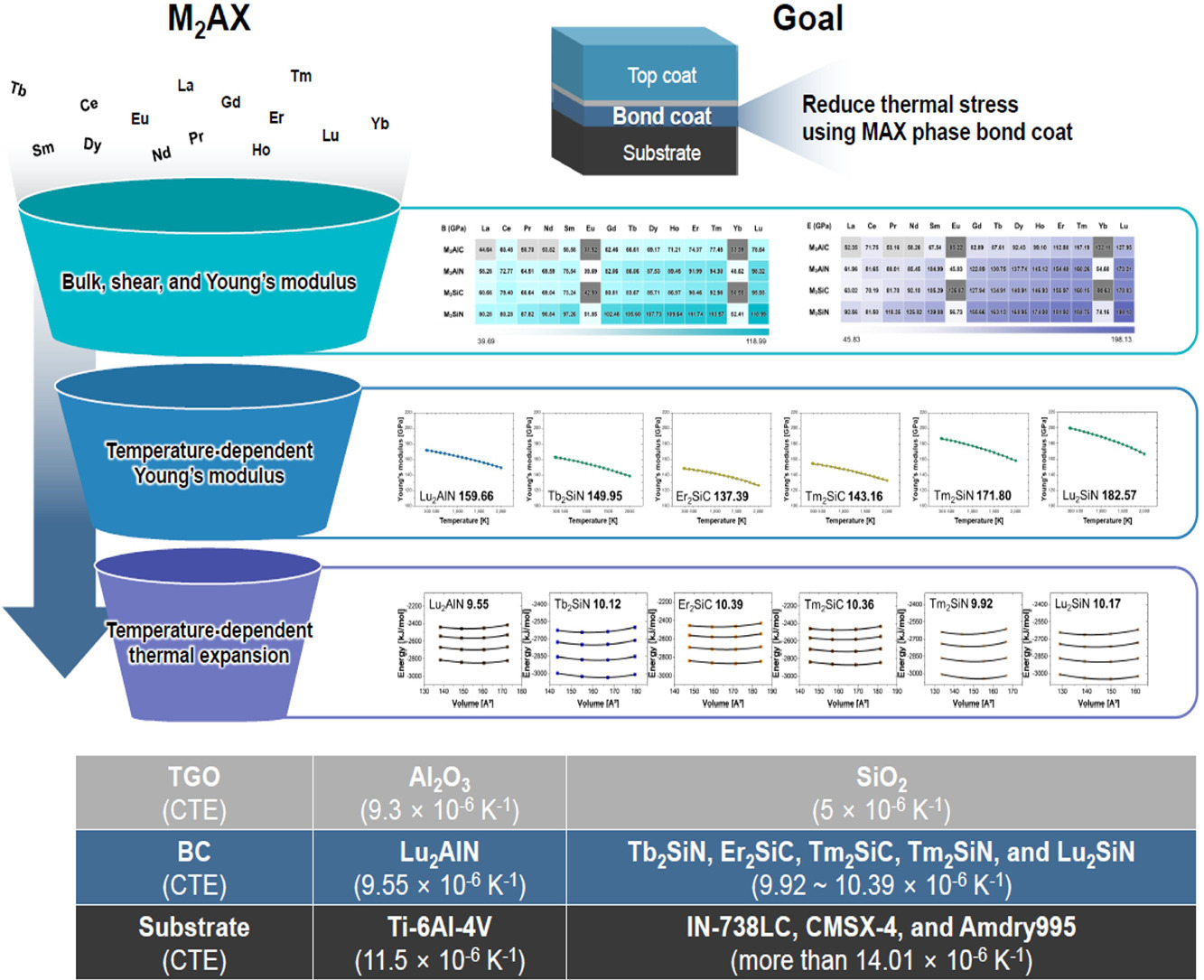

-
 [논문게재] Computational design of transition metal nitrides (Ti1−xMx)N (M = Ti, V, Cr, Zr, Nb…
[논문게재] Computational design of transition metal nitrides (Ti1−xMx)N (M = Ti, V, Cr, Zr, Nb…Author: S.Kyung†, J.Choi†, J.Kwak, J.Kim*Title: Computational design of transition metal nitrides (Ti1−xMx)N (M = Ti, V, Cr, Zr, Nb, Mo, Hf, Ta, and W) for coatingsJournal: International Journal of Applied Ceramic TechnologyYear: 2025Abstract:The development of coatings with high-performance applications such as cutting tools and aerospace fields is essential because high temperatures during machining and processing shorten the lifespan of tools. We investigated the structural information and mechanical properties of (Ti1-xMx)N (0.0625 ≤ x ≤ 0.125) (M = V, Cr, Zr, Nb, Mo, Hf, Ta, and W) using ab initio calculation. We provide specific guidance for enhancing the performance of TiN-based coatings via ab initio calculation. Through this study, we suggest that (Ti0.875W0.125)N, which exhibits the highest hardness, is a suitable candidate for cutting tools and aerospace coating materials.
-
 [논문게재] Ab initio simulations of M₂AX (M = lanthanides, A = Al or Si, X = C or N) phases as…
[논문게재] Ab initio simulations of M₂AX (M = lanthanides, A = Al or Si, X = C or N) phases as…Author: H.Kim†, J.Choi†, J.Choi, J.Kwak, J.Kim*Title: Ab initio simulations of M2AX (M = lanthanides, A = Al or Si, X = C or N) phases as bond coats for thermal barrier coatingsJournal: Scripta MaterialiaYear: 2025Impact factor: 5.3Abstract:MAX phases such as Ti2AlC and Cr2AlC are attracting attention due to their oxides (Al2O3 or Cr2O3). However, little research has considered MAX phases incorporating rare earth elements at the M sites. This study used ab initio calculations to explore the temperature dependence of the Young's modulus and coefficient of thermal expansion (CTE) of MAX phases with M = La, Ce, Pr, Nd, Sm, Eu, Gd, Tb, Dy, Ho, Er, Tm, Yb, or Lu. MAX phases with M = Er, Lu, and Tm are particularly suitable for use as a bond coat (BC) layer between a thermally grown oxide (TGO) and substrate, given the compatibility of thermal expansion. The low CTE difference between a MAX phase and the TGOs or substrate can effectively relieve thermal stresses. These findings provide valuable insights into the development of MAX phase BCs.
-
 [표지선정] 2D MoS₂ Helical Liquid Crystalline Fibers for Multifunctional Wearable Sensors
[표지선정] 2D MoS₂ Helical Liquid Crystalline Fibers for Multifunctional Wearable SensorsAuthor: J.Park†, J.Park†, S.Lee, H.Kim, H.Kim, J.Park, T.Yun, J.Lee, S.Kim, H.Jin, K.Parkm H.Kang, H.Kim, H.Jin, J.Kim*, S.Kim*, B.Kim*Title: 2D MoS2 Helical Liquid Crystalline Fibers for Multifunctional Wearable SensorsJournal: Advanced Fiber MaterialsYear: 2024Impact factor: 17.2Abstract:Fiber-based material systems are emerging as key elements for next-generation wearable devices due to their remarkable advantages, including large mechanical deformability, breathability, and high durability. Recently, greatly improved mechanical stability has been established in functional fiber systems by introducing atomic-thick two-dimensional (2D) materials. Further development of intelligent fibers that can respond to various external stimuli is strongly needed for versatile applications. In this work, helical-shaped semiconductive fibers capable of multifunctional sensing are obtained by wet-spinning MoS2 liquid crystal (LC) dispersions. The mechanical properties of the MoS2 fibers were improved by exploiting high-purity LC dispersions consisting of uniformly-sized MoS2 nanoflakes. Notably, three-dimensional (3D) helical fibers with structural chirality were successfully constructed by controlling the wet-spinning process parameters. The helical fibers exhibited multifunctional sensing characteristics, including (1) photodetection, (2) pH monitoring, (3) gas detection, and (4) 3D strain sensing. 2D materials with semiconducting properties as well as abundant surface reactive sites enable smart multifunctionalities in one-dimensional (1D) and helical fiber geometry, which is potentially useful for diverse applications such as wearable internet of things (IoT) devices and soft robotics.















